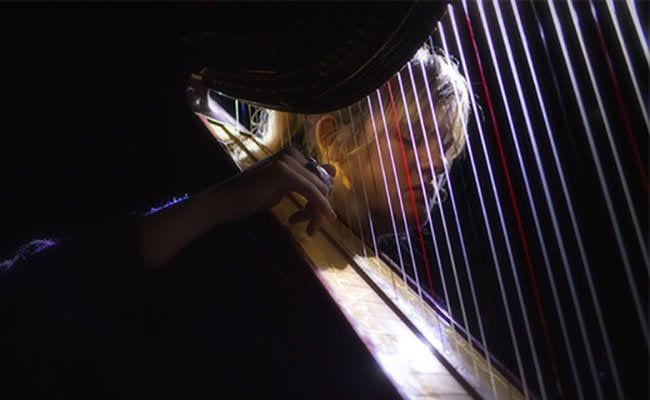
For Mary Lattimore, the adage of “the best things come to those that wait” perfectly summarizes her career to date. After flourishing as a member of the underground Philadelphia music scene, her standing as a talented harpist and multi-instrumentalist grew enough for her to be asked to feature on albums from indie luminaries such as a Kurt Vile, Thurston Moore and Jarvis Cocker. After the release of her debut album, 2012’s The Withdrawing Room and its follow-up, 2014’s Slant of Light, Lattimore finally had her moment in the spotlight with her debut for Ghostly International At the Damn. Not only did it garner critical acclaim, but it also introduced her experimental harp playing to a much larger audience. On it, Lattimore, skewered traditional notions of harp playing as she warped and twisted its classical foundations. The album perfectly summarized her fluid, avant-garde style as she eschewed the traditional, often surprising with manipulated, plucked notes that were allowed to oscillate and drift as well as incorporating a sophisticated use of electronic music.
Collected Pieces serves as a complimentary piece to the, At the Damn album. As the title suggests, it isn’t a group of songs written for one, specific record. The collection features pieces of work that she wrote between 2011 and 2016 in her old home in Philadelphia. For Lattimore, it was like opening an old sealed box found in the garage after a house move. A veritable treasure trove of old memories with their inherent highs and lows, joys and sorrows. She has now decided to take those memories and package them together for the first time. As a collected group of works, these very personal pieces offer a fascinating glimpse of Lattimore as an artist as she translates significant moments in her life into music. It also shows her development as a musician as she works towards the sound that proved to be such a captivating triumph on her At the Damn album.
The songs themselves are intricate, beguiling pieces that gently and unhurriedly shift and fluctuate. Opener “Wawa by the Ocean”, a surprising ode to the convenience store dotted around the mid-Atlantic region, appropriately conjures up the serene feeling of being close to the sea. Lattimore’s languid, evocative playing, relying on lingering, suspended plucked notes allows the song to gradually unfurl itself like the arrival of a cool evening breeze as it softens the humidity of a summer’s day. It’s followed by the similarly elongated “Bold Rides”, which again lightly rolls and undulates, highlighting Lattimore’s ability to create tranquil, pastoral moods. It gentle swells like the wind as she modifies the atmosphere with the subtle use of electronics to roughen and agitate the sound. Unlike “Wawa by the Ocean”, it contains a pervading sense of melancholy but never oppressively so.
This feeling is even more pronounced in “We Just Found Out She Died”. The song is a tender and affecting tribute to Twin Peaks actress Margaret Lanterman who died shortly after giving a speech that Lattimore attended. It’s founded on ascending, shimmering harp notes layered on top of bright, airy synths. Rather unexpectedly it also features Lattimore’s angelic, ethereal singing that rises and ripples as if intended as a conduit to heaven. “It Was Late and We Watched the Motel Burn” lurches with the pulse and chatter of electronics that sound like they are mimicking the reassuring sound of wildlife at night. Characteristically, the harp sweeps and arcs before once again turning a little more discordant as synths buzz like the sound of a distant swarm. The pining, “The Warm Shoulder” rises and falls as it sails on a sweet breath of arpeggios. “Your Glossy Camry” is a dazzling finale as frigid, single notes ring out and shiver like the tingle of cool air on the back of the neck. It delicately captivates before cracking with overlaid electronic sounds creating something altogether hazier and indistinct.
Musically, despite being written and recorded at different times over a five-year period, the album holds together as a fluid piece rather than as disparate songs with little to bind them together. They also provide further testament to Lattimore’s innovative harp playing as she exploits the instrument in a genuinely unique way. Meanwhile, the subtle electronic embellishments are used sparingly and confirm how she has developed her singular take on experimental, harp music. As a whole, these songs act as the lasting emotional debris of a life lived in one place, in this case, Lattimore’s former home in Philadelphia. While many may be long forgotten, they still sound as pertinent as they did when they were written.

